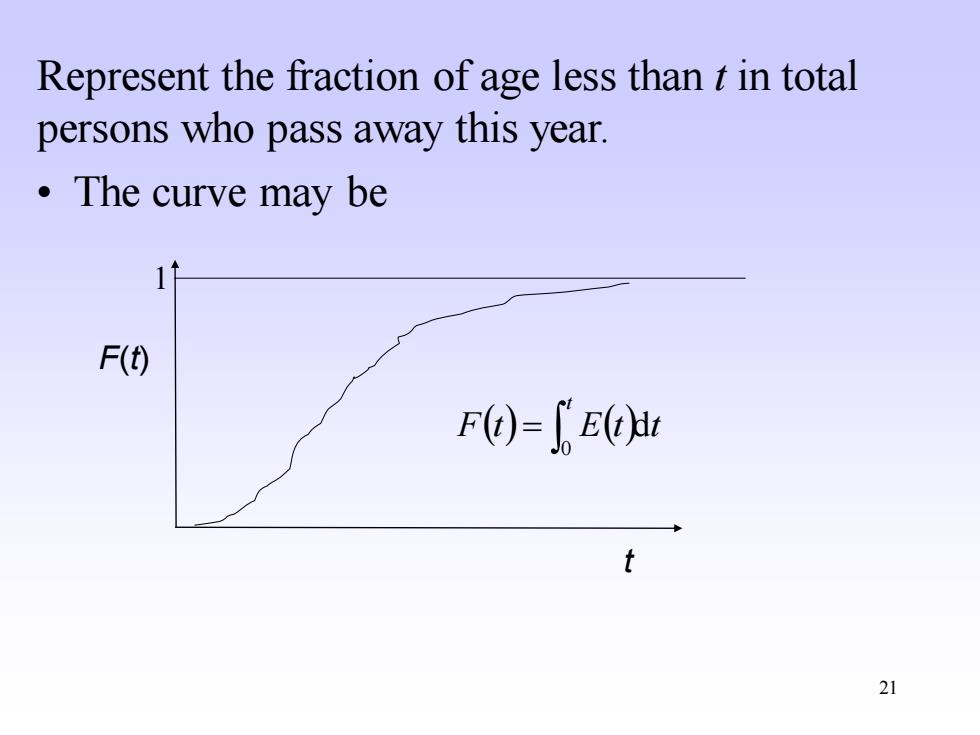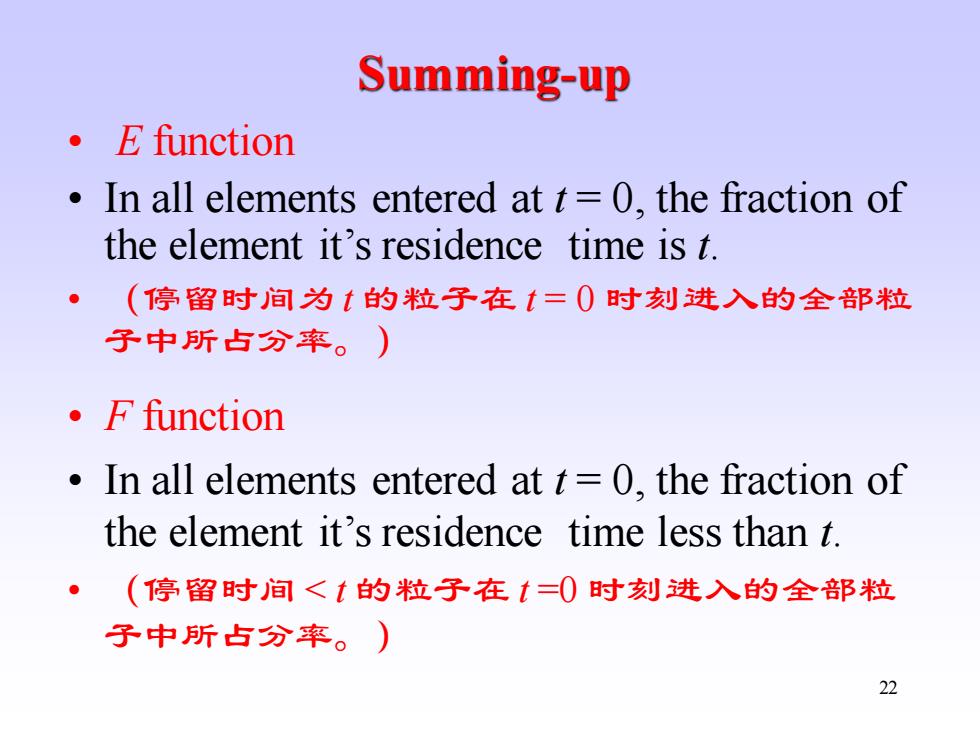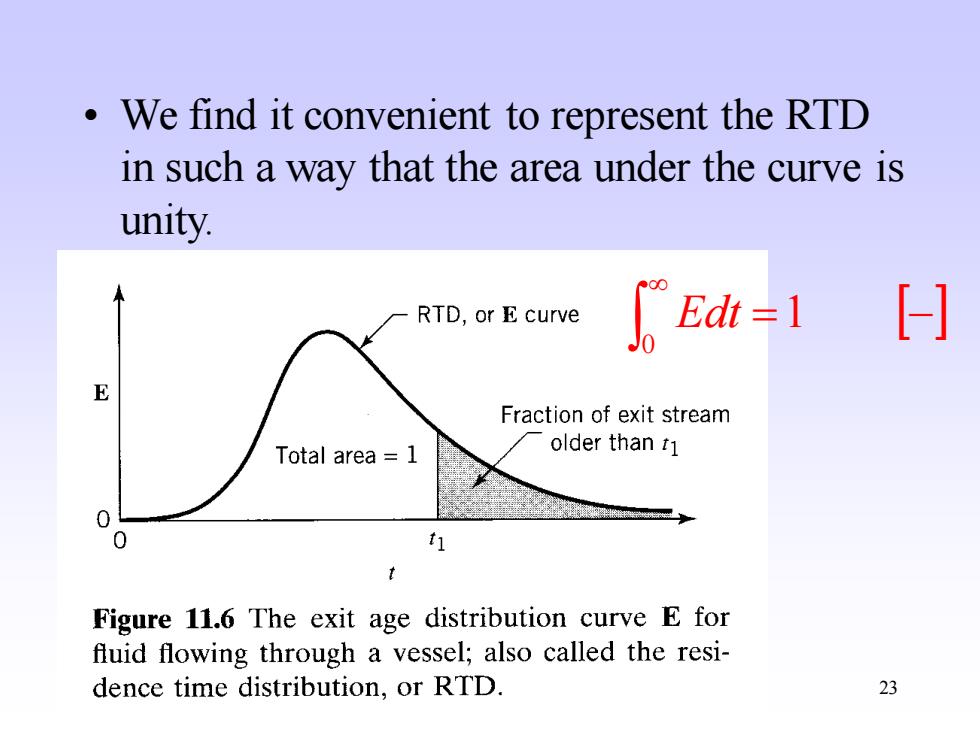
Represent the fraction of age less than t in total persons who pass away this year. ·The curve may be F() F()=[E()t t 21
21 • The curve may be Represent the fraction of age less than t in total persons who pass away this year. t 1 F(t) E(t) t t d 0 = F(t)

Summing-up ·E function In all elements entered at t=0,the fraction of the element it's residence time is t. ·(停留时间为1的粒子在1=0时刻进入的全部粒 子中所占分率。) ·F function In all elements entered at t=0,the fraction of the element it's residence time less than t. (停留时间<1的粒子在=0时刻进入的全部粒 子中所占分率。) 22
22 • E function • In all elements entered at t = 0, the fraction of the element it’s residence time is t. • (停留时间为t 的粒子在 t = 0 时刻进入的全部粒 子中所占分率。) Summing-up • F function • In all elements entered at t = 0, the fraction of the element it’s residence time less than t. • (停留时间 < t 的粒子在 t =0 时刻进入的全部粒 子中所占分率。)

We find it convenient to represent the RTD in such a way that the area under the curve is unity. RTD,or E curve Edt=1 H E Fraction of exit stream Total area 1 older than r1 0 0 Figure 11.6 The exit age distribution curve E for fuid flowing through a vessel;also called the resi- dence time distribution,or RTD. 23
23 • We find it convenient to represent the RTD in such a way that the area under the curve is unity. = − 1 0 Edt

With this representation the fraction of exit stream of age between t and t+dt is Edt H The fraction younger th an age t,is Ed ] Whereas the fraction of material older than t,is ∫Edh=1-J'Edh ] 24
24 • With this representation the fraction of exit stream of age between t and t+dt is = − − − 1 1 1 t t 0 1 t 0 1 Edt 1 Edt t Edt t than is Whereas the fraction of material older The fraction younger th an age is Edt −

Experimental methods for finding E There are many methods to find the E curve. The simplest and most direct way is to use a physical or nonreactive tracer. Pulse and step experiments Pulse Random Step Periodic input input input input Cpulse Figure 11.7 Various ways of studying the flow pattern in vessels. 26
26 • Experimental methods for finding E • There are many methods to find the E curve. The simplest and most direct way is to use a physical or nonreactive tracer. • Pulse and step experiments